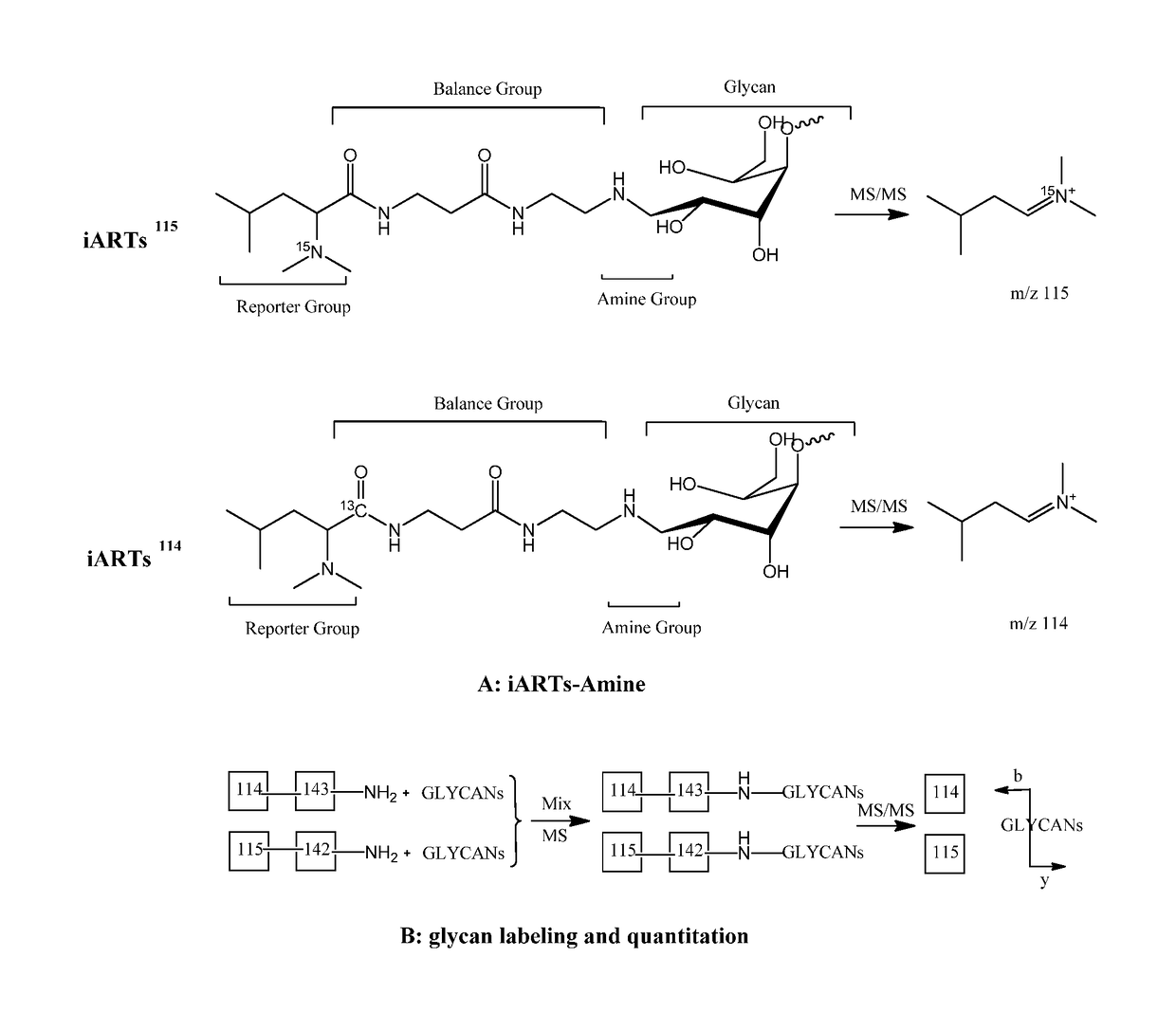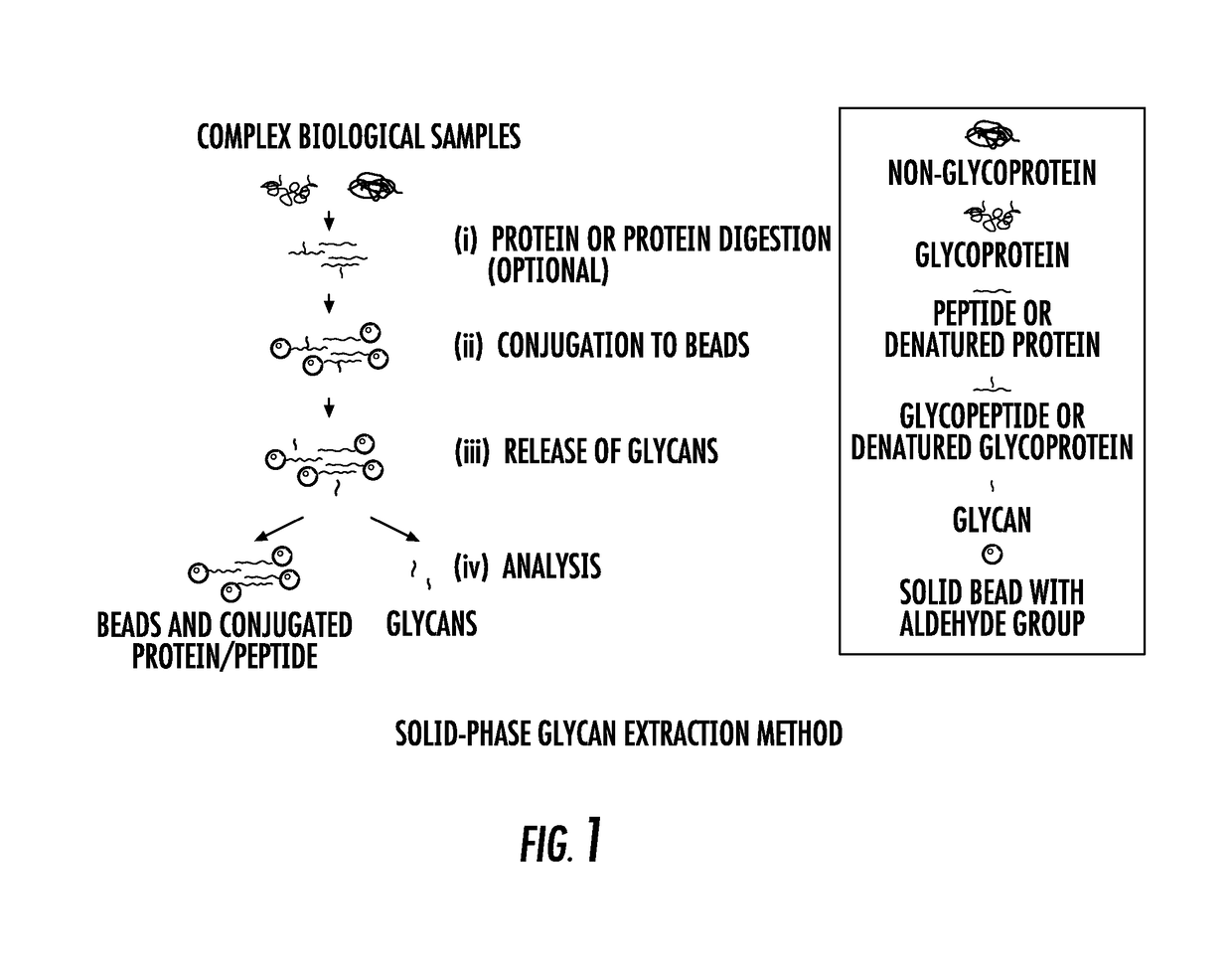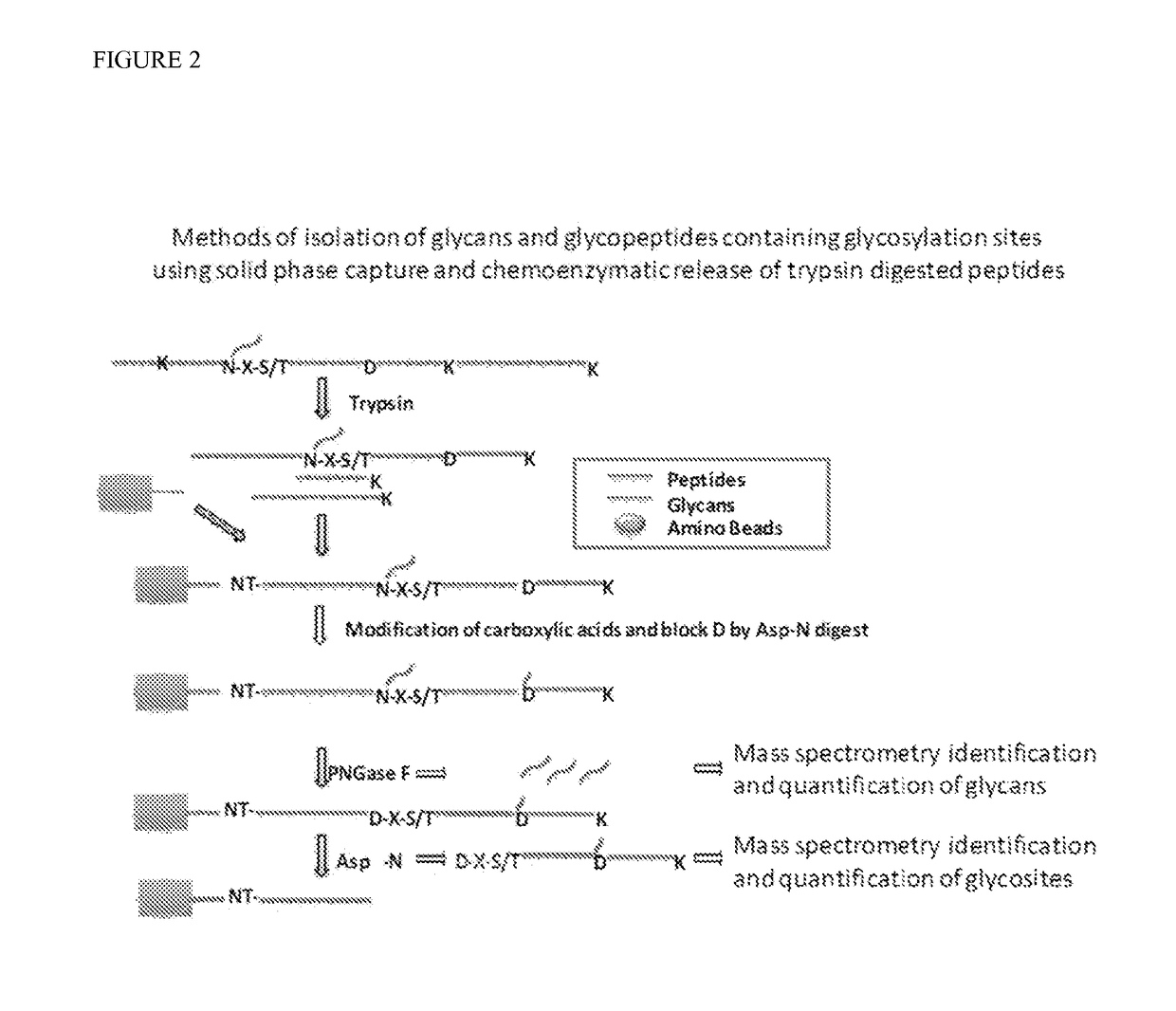Isobaric aldehyde-reactive tags for and analysis of glycans using same
a technology of isobaric aldehyde and reactive tags, applied in the field of isobaric aldehyde-reactive tags for and analysis of glycans using same, can solve the problems of difficult data analysis, limited detection resolution by front-end separation techniques, and complicated spectra, so as to improve signal-to-noise ratio, complete labeling, and easy fragmentation
- Summary
- Abstract
- Description
- Claims
- Application Information
AI Technical Summary
Benefits of technology
Problems solved by technology
Method used
Image
Examples
example 1
[0082]The iARTs labeling strategy. The molecular structure of an embodiment of a pair of 2-plex iARTs is illustrated in FIG. 3, which comprises three parts, including a reporter, a balancer and a primary amine group. The reporter group in this embodiment is C7H1614N and C7H1615N, thus molecular weight is 114 and 115 in MS / MS spectra respectively. This mass difference is compensated by the balance group: one carbon uses 13C in iARTs114 whose reporter ion is 114 Da; while the same carbon is a 12C in iARTs115 (FIG. 3A).
[0083]Reductive amination has been widely used to label reduce ends of glycans with different fluorophore tags. Typically, reductive amination is performed at 65° C. for 3-4 hours, or 70° C. for 2 hours, or 80° C. for 30 minutes. Studies showed that labeling glycans in high temperature (80° C.) and low pH (2 M acetic acid) for 3 hours resulted in acid catalyzed loss of sialic acids. To prevent sialic acid hydrolysis during reductive amination, temperature-controlled micr...
example 2
[0086]The effectiveness of glycan quantification by iARTs labeling may be determined by its MS and MS / MS pattern. Ideally, one would expect to observe reporter ion and glycan fragments in MS / MS spectra. Fragmentation between the reporter and the balancer leads to the detection of reporter ion 114 or 115; fragmentation of glycosidic bonds generates a series of species consisting of glycan structural information. The single charged fragment ions ([M+H]+) of iARTs-labeled DP5 consist of reporter ion 114 or 115, monosaccharide-iARTs (438.29 Da), disaccharide-iARTs (600.31 Da), trisaccharide-iARTs (762.23 Da), and tetrasaccharide-iARTs (924.12 Da) (FIG. 5A). It was also noted that no other fragment ions generated from glycans overlap with reporter ions 114 and 115. Therefore, the fragments from MS / MS provide not only structural information for glycan identification, but also intensity of reporter ions for glycan quantification.
[0087]For MS analysis, it is crucial to identify how many cha...
example 3
[0088]Quantification of isobarically labeled glycans. The accuracy and dynamic range of isobaric iARTs labeling on glycans was assessed with standard glycans having free reducing ends. Four standard glycans (DPs) were labeled by iARTs114 or iARTs115. The reaction was conducted in microwave as described in experimental section. After Carbograph purification and vacuum dried, differentially labeled glycans were dissolved in water (Table 1) and pooled together. Several ratios of iARTs114 vs. iARTs115 were mixed, including 1:4, 1:3, 1:2, 4:1, and 10:1. One μL of each sample was used for MALDI (MS and MS / MS), while each sample was diluted to 10-fold for Orbitrap MS / MS quantification.
[0089]
TABLE 1Sample preparation for iARTs-DP labeling. Concentrationof iARTs-114 and iARTs-115 is 50 mM; DP (DP4,DP5, DP6 and DP7) is 100 μMiARTs114-DPiARTs115-DPDissolved iniARTs114DPiARTs115DPDI after puri-Ratio(μL)(μL)(μL)(μL)fication (μL)1:41050402002501:31050301502001:21050201001504:1804002010050010:1 10...
PUM
| Property | Measurement | Unit |
|---|---|---|
| pH | aaaaa | aaaaa |
| pH | aaaaa | aaaaa |
| pH | aaaaa | aaaaa |
Abstract
Description
Claims
Application Information
 Login to View More
Login to View More - R&D
- Intellectual Property
- Life Sciences
- Materials
- Tech Scout
- Unparalleled Data Quality
- Higher Quality Content
- 60% Fewer Hallucinations
Browse by: Latest US Patents, China's latest patents, Technical Efficacy Thesaurus, Application Domain, Technology Topic, Popular Technical Reports.
© 2025 PatSnap. All rights reserved.Legal|Privacy policy|Modern Slavery Act Transparency Statement|Sitemap|About US| Contact US: help@patsnap.com



